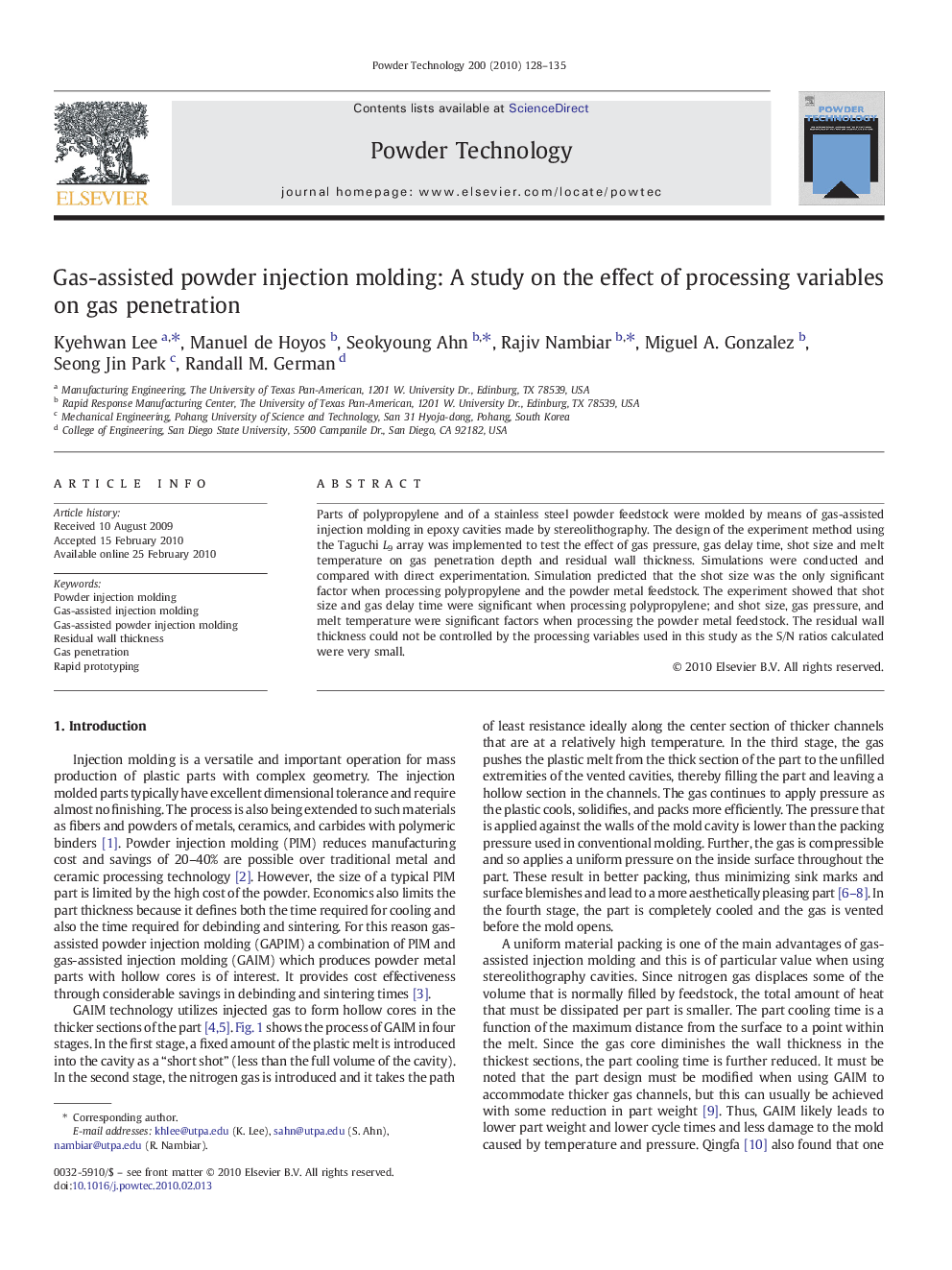| Article ID | Journal | Published Year | Pages | File Type |
|---|---|---|---|---|
| 238099 | Powder Technology | 2010 | 8 Pages |
Parts of polypropylene and of a stainless steel powder feedstock were molded by means of gas-assisted injection molding in epoxy cavities made by stereolithography. The design of the experiment method using the Taguchi L9 array was implemented to test the effect of gas pressure, gas delay time, shot size and melt temperature on gas penetration depth and residual wall thickness. Simulations were conducted and compared with direct experimentation. Simulation predicted that the shot size was the only significant factor when processing polypropylene and the powder metal feedstock. The experiment showed that shot size and gas delay time were significant when processing polypropylene; and shot size, gas pressure, and melt temperature were significant factors when processing the powder metal feedstock. The residual wall thickness could not be controlled by the processing variables used in this study as the S/N ratios calculated were very small.
Graphical abstractParts of a stainless steel powder feedstock were molded by means of gas-assisted injection molding. Simulation predicted that the shot size was the only significant factor. The experiment showed that shot size, gas pressure, and melt temperature were significant factors when processing the powder metal feedstock. The residual wall thickness could not be controlled by the processing variables used in this study.Schematic diagram of gas-assisted powder metal injection molding processFigure optionsDownload full-size imageDownload as PowerPoint slide
